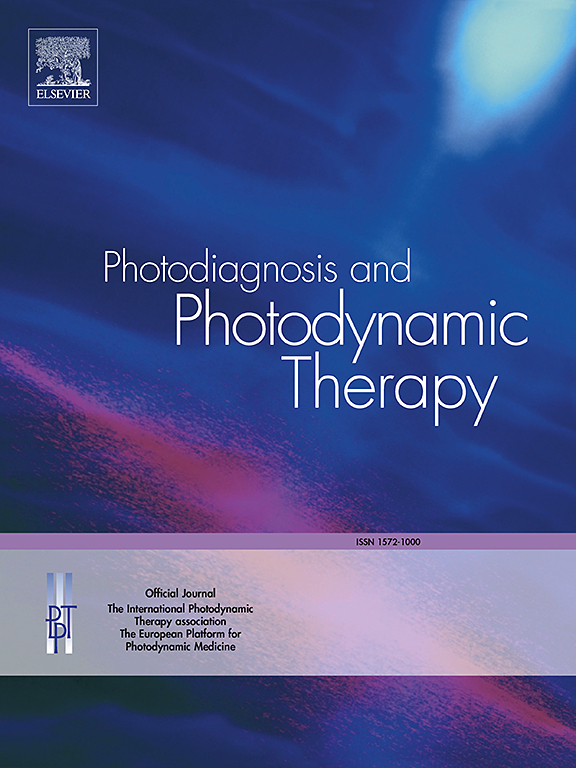Predicting response to anti-VEGF therapy in neovascular age-related macular degeneration using random forest and SHAP algorithms
IF 3.1
3区 医学
Q2 ONCOLOGY
引用次数: 0
Abstract
Purpose
This study aimed to establish and validate a prediction model based on machine learning methods and SHAP algorithm to predict response to anti-vascular endothelial growth factor (VEGF) therapy in neovascular age-related macular degeneration (AMD).
Methods
In this retrospective study, we extracted data including demographic characteristics, laboratory test results, and imaging features from optical coherence tomography (OCT) and optical coherence tomography angiography (OCTA). Eight machine learning methods, including Logistic Regression, Gradient Boosting Decision Tree, Random Forest, CatBoost, Support Vector Machine, XGboost, LightGBM, K Nearest Neighbors were employed to develop the predictive model. The machine learning method with optimal performance was selected for further interpretation. Finally, the SHAP algorithm was applied to explain the model's predictions.
Results
The study included 145 patients with neovascular AMD. Among the eight models developed, the Random Forest model demonstrated general optimal performance, achieving a high accuracy of 75.86 % and the highest area under the receiver operating characteristic curve (AUC) value of 0.91. In this model, important features identified as significant contributors to the response to anti-VEGF therapy in neovascular AMD patients included fractal dimension, total number of end points, total number of junctions, total vessels length, vessels area, average lacunarity, choroidal neovascularization (CNV) type, age, duration and logMAR BCVA. SHAP analysis and visualization provided interpretation at both the factor level and individual level.
Conclusion
The Random Forest model for predicting response to anti-VEGF therapy in neovascular AMD using SHAP algorithm proved to be feasible and effective. OCTA imaging features, such as fractal dimension, total number of end points et al., were the most effective predictive factors.
使用随机森林和SHAP算法预测新生血管性年龄相关性黄斑变性患者抗vegf治疗的反应。
目的:本研究旨在建立并验证基于机器学习方法和SHAP算法的预测模型,以预测新生血管性年龄相关性黄斑变性(AMD)患者对抗血管内皮生长因子(VEGF)治疗的反应。方法:在这项回顾性研究中,我们提取了包括人口统计学特征、实验室测试结果以及光学相干断层扫描(OCT)和光学相干断层扫描血管造影(OCTA)成像特征在内的数据。采用Logistic回归、梯度增强决策树、随机森林、CatBoost、支持向量机、XGboost、LightGBM、K近邻等8种机器学习方法建立预测模型。选择性能最优的机器学习方法进行进一步解释。最后,应用SHAP算法对模型的预测结果进行解释。结果:本研究纳入145例新生血管性AMD患者。8个模型中,随机森林模型总体表现最优,准确率高达75.86%,受试者工作特征曲线下面积(AUC)值最高,为0.91。在该模型中,新血管性AMD患者抗vegf治疗应答的重要特征包括分形维数、终点总数、连接总数、血管总长度、血管面积、平均腔隙、脉络膜新生血管(CNV)类型、年龄、持续时间和logMAR BCVA。SHAP分析和可视化提供了因子水平和个体水平的解释。结论:随机森林模型应用SHAP算法预测新生血管性AMD抗vegf治疗反应是可行和有效的。分形维数、终点总数等OCTA成像特征是最有效的预测因素。
本文章由计算机程序翻译,如有差异,请以英文原文为准。
求助全文
约1分钟内获得全文
求助全文
来源期刊

Photodiagnosis and Photodynamic Therapy
ONCOLOGY-
CiteScore
5.80
自引率
24.20%
发文量
509
审稿时长
50 days
期刊介绍:
Photodiagnosis and Photodynamic Therapy is an international journal for the dissemination of scientific knowledge and clinical developments of Photodiagnosis and Photodynamic Therapy in all medical specialties. The journal publishes original articles, review articles, case presentations, "how-to-do-it" articles, Letters to the Editor, short communications and relevant images with short descriptions. All submitted material is subject to a strict peer-review process.
 求助内容:
求助内容: 应助结果提醒方式:
应助结果提醒方式:


